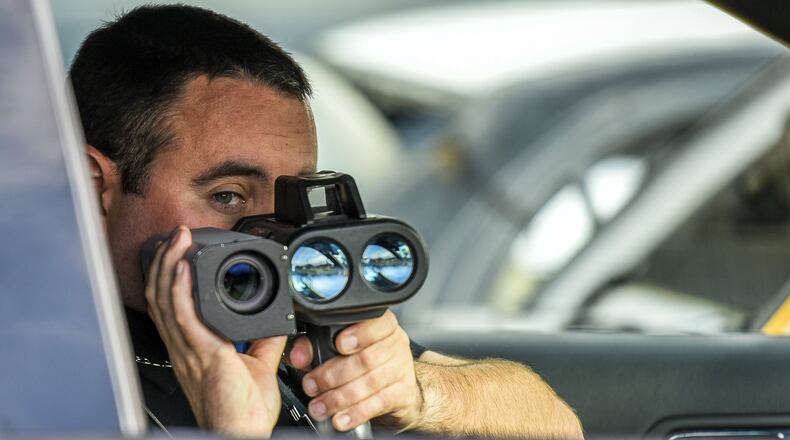New Miami’s speed cameras were declared unconstitutional in March 2014, and the case has been in and out of common pleas and appellate courts ever since. The Ohio Supreme Court declined a review of the case last summer.
The village cited 44,993 people and collected $1.8 million during the 15 months the cameras were rolling.
New Miami contracted with Optotraffic to run the speed camera program, and for that service, the Maryland traffic camera business was paid $1.2 million, or 40 percent of the total fine collection amount. So the final figure the speeders want to collect is $3 million.
If Oster finds in favor of the speeders, the village’s outside counsel James Englert argues that only the drivers who received a notice of liability, requested a hearing and were found liable to pay the fine deserve their money back. Hence he says the village is only liable for $10,728 and has up to 10 years to repay speeders.
NEW: Download the free Journal-News app, the #1 source for local news
INITIAL REPORT, Dec. 28:
A Butler County judge is expected Thursday to rule on a local speed camera case — a move that could see the village of New Miami ordered to repay $3 million in illegally collected ticket fines.
Judge Michael Oster is scheduled to rule Thursday on a motion by the speeders’ attorneys to solidify an earlier decision — that the stationary speed cameras were unconstitutional — which would get the repayment process underway.
NEW: Download the free Journal-News app, the #1 source for local news
“I think even if he doesn’t issue a formal written decision, I think we’ll have a pretty good idea where he is going on these things,” Josh Engel, an attorney for those who have been ticketed, said. “This case has been decided. Judge (Michael) Sage decided this case already.”
Sage, who is now retired, declared New Miami’s speed cameras unconstitutional in March 2014, and the case has been in and out of the common pleas and appellate courts ever since. The Ohio Supreme Court declined a review of the case last summer.
The village cited 44,993 people and collected $1.8 million during the 15 months the cameras were rolling.
The village instituted a new program after Sage’s ruling and has cited 9,437 speeders and collected $424,196.
New Miami contracted with Optotraffic to run the previous speed camera program, and for that service, the Maryland traffic camera business was paid $1.2 million, or 40 percent of the total fine collection amount. So the final figure the speeders want to collect is $3 million.
If Oster finds in favor of the speeders, the village’s outside counsel James Englert argues that only the drivers who received a notice of liability, requested a hearing and were found liable to pay the fine deserve their money back. Hence he says the village is only liable for $10,728 and has up to 10 years to repay speeders.
Englert said the state legislature has made provisions so municipalities and their residents, who depend on them for services like police and fire, are protected.
“If there is a large judgement and it had to be paid off immediately … there would be no money left for the police or the fire service or anything else,” Englert said.
The state legislature has attacked speed cameras with new laws that crimp the local programs. Legislation passed in 2014 requires a police officer to accompany cameras.
The city of Dayton is fighting the new law in the Ohio Supreme Court and an oral argument is scheduled for Jan. 10.
If the judge sides with the speeders, Englert said the village will appeal.. Englert’s law firm has been paid almost $113,000 by the village for legal services in this case.
About the Author
